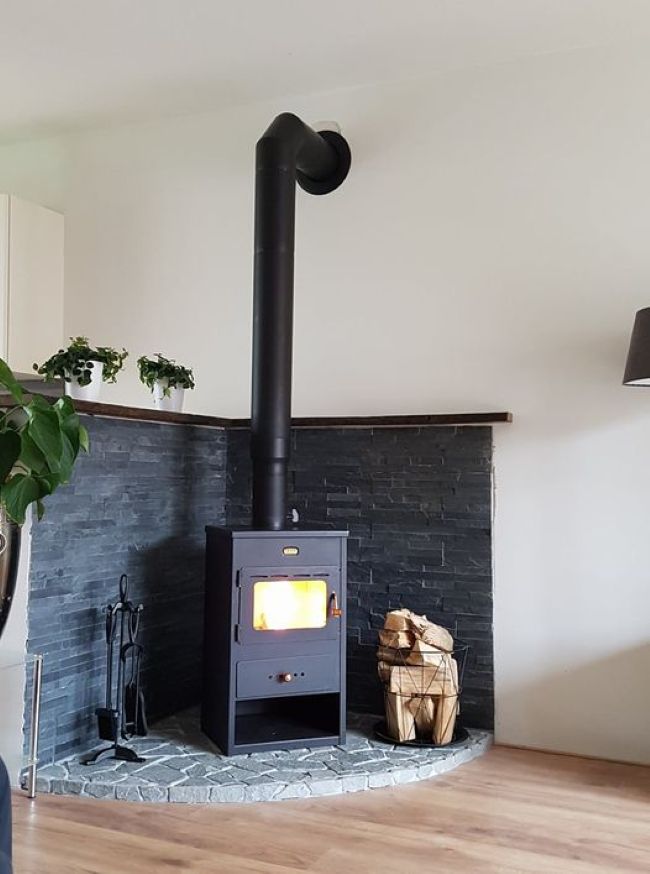Save Hundreds on Your Wood Burner Installation

Why DIY Flue Pipes Make Financial Sense
When planning to install a wood burning stove in your home, the quoted installation costs can come as quite a shock. Many homeowners find themselves facing bills of £2,000 to £4,000 for what appears to be a straightforward job. The reality is that a significant portion of these costs comes from the flue pipe system itself, along with the labour charges for installation.The good news? Installing flue pipes is far more manageable than most people realise, and tackling this part of the project yourself can slash your overall costs by 40-60%. With proper guidance and quality components, many homeowners successfully complete their flue installations, leaving only the final stove connection and commissioning to qualified professionals.
Understanding the Real Costs of Professional Installation
Professional installers typically charge between £150-£250 per day for labour, and a complete wood burning stove installation can take 2-4 days depending on the complexity. When you break down these costs, you’ll often find:
- Labour: £600-£1,000
- Flue pipes and components: £400-£800
- Additional materials and consumables: £200-£400
- Testing and certification: £150-£300
The flue pipe components alone represent a substantial portion of the total cost, yet these are precisely the elements that competent DIY enthusiasts can handle themselves. Modern twin wall flue systems are designed with the home installer in mind, featuring twist-lock connections and clear assembly instructions.
Why Modern Flue Systems Suit DIY Installation
Today’s twin wall flue pipes have evolved considerably from the complex systems of previous decades. Manufacturers now produce components that connect together using simple twist-lock mechanisms, eliminating the need for specialised tools or extensive technical knowledge.
These systems include pre-fabricated components for every conceivable scenario: straight sections, adjustable elbows, roof penetration kits, and decorative finishes. Each component is manufactured to precise tolerances, ensuring proper fit and compliance with building regulations when installed according to the manufacturer’s specifications.
The quality of modern flue components also means they arrive ready to install, with gaskets, clamps, and fixing brackets included. This standardisation removes much of the complexity that once made flue installation the exclusive domain of professionals.
What You Can Realistically Tackle Yourself
Most homeowners can competently handle the majority of flue pipe installation tasks. This includes:
Internal flue runs: Installing the flue pipe from your stove position up to the ceiling level requires basic DIY skills. You’ll need to cut openings in ceilings and floors, but this uses standard tools most homeowners already possess.
Loft space installation: Running flue pipes through loft spaces involves straightforward assembly of straight sections and supports. The components are lightweight and manageable for one person to handle.
Roof preparation: While working at height requires caution, cutting the roof opening and fitting the flashing kit uses conventional roofing techniques. Many homeowners comfortable with basic roof maintenance can manage this stage.
External flue assembly: Connecting the external flue sections and securing them to the building structure follows logical sequences clearly outlined in manufacturer instructions.
The areas where professional involvement remains advisable include the final stove connection, gas tightness testing, and obtaining the necessary compliance certificates. However, completing the flue installation yourself means professionals only need a few hours to finish the job rather than several days.
Selecting the Right Components for Your Installation
Understanding which components you need prevents over-ordering and ensures compatibility throughout your system. Modern wood burners typically require 6-inch (150mm) or 8-inch (200mm) diameter flue systems, with twin wall construction mandatory for most domestic installations.
Key components for a typical installation include:
Starter sections: These connect directly to your stove and often include a register plate adapter for older chimneys.
Straight sections: Available in various lengths, these form the main vertical run of your flue system.
Adjustable elbows: These allow you to navigate around obstacles while maintaining the required minimum clearances from combustible materials.
Support brackets: Wall-mounted brackets secure the flue system and prevent movement during operation.
Roof penetration kits: These include the flashing, storm collar, and weatherproofing components needed for a watertight roof seal.
Terminal guards and caps: These prevent debris entry and provide weather protection for the flue outlet.
Quality suppliers provide detailed technical drawings showing exactly which components suit your specific installation requirements. This removes guesswork and ensures you order everything needed for a complete installation.
Planning Your Installation Route
Successful flue installation begins with careful route planning. Modern building regulations require specific clearances from combustible materials and minimum heights above roof level. Planning your route ensures compliance while minimising the number of direction changes needed.
The most efficient installations run vertically wherever possible, as each bend or offset increases both cost and installation complexity. Measure your route carefully, accounting for floor and ceiling thicknesses, roof slope, and any obstacles that might require route modifications.
Many installations benefit from running internally through the house rather than externally up an outside wall. Internal installations provide better heat retention and face fewer weather-related stresses, though they do require more ceiling and floor penetrations.
Consider access requirements during installation. Flue components need to reach their final positions, which might mean temporarily removing loft insulation or creating larger access openings that can be reduced once installation is complete.
Step by Step Installation Process
Starting from the stove position, installation typically follows this sequence:
Ground floor preparation: Mark and cut your ceiling opening, ensuring adequate clearance around the flue pipe. Install the ceiling support kit that will carry the weight of the entire flue system.
First floor navigation: Route through the first floor space, cutting any additional floor openings needed. Install intermediate support brackets to maintain pipe alignment and prevent sagging.
Loft space assembly: Connect straight sections through the loft space, maintaining the required clearances from roof timbers and insulation materials. Install additional supports as specified in the manufacturer’s instructions.
Roof penetration: Mark and cut your roof opening, install the flashing kit, and ensure weatherproof sealing around the roof penetration. This stage requires careful attention to detail to prevent future water ingress.
External completion: Fit the final external sections and terminal components, ensuring the system reaches the required height above roof level for proper draft and compliance.
Each stage builds logically on the previous work, and the modular nature of modern systems means you can complete installation over several weekends if preferred.
Common Mistakes to Avoid
Many DIY installations encounter problems that could easily be prevented with proper planning and attention to manufacturer specifications.
Inadequate support causes long-term problems as thermal expansion and contraction can stress improperly supported joints. Follow support spacing recommendations precisely, even if this seems excessive during installation.
Poor sealing at roof level leads to water damage that can be expensive to remedy. Take time to install flashing correctly, using appropriate sealants and following proven weatherproofing techniques.
Incorrect clearances from combustible materials create safety hazards and building regulation compliance issues. Measure clearances carefully and err on the side of caution if in doubt about specific requirements.
Mixing components from different manufacturers can create compatibility problems. Stick with a single system throughout your installation to ensure proper fit and performance.
Getting Expert Support When You Need It
Even with careful planning, most DIY installations benefit from professional guidance at key stages. Many suppliers offer telephone support services that can help resolve specific technical queries as they arise during installation.
This support typically covers component selection, routing advice, building regulation requirements, and troubleshooting assembly problems. Having access to experienced technical advisors means you can tackle challenging installations with confidence, knowing expert help is available when needed.
Some suppliers also offer site visits for complex installations where telephone support might be insufficient. This can be particularly valuable for unusual building layouts or where existing chimney modifications are required.
The Financial Benefits Add Up Quickly
When you complete the flue installation yourself, the financial benefits extend beyond the immediate labour cost savings. Many DIY installers find they can afford higher quality components within their original budget, leading to better long-term performance and durability.
You also gain valuable knowledge about your installation that proves useful for future maintenance and troubleshooting. Understanding how your system works and having spare components on hand means you can address minor issues quickly rather than waiting for professional callouts.
The time savings can be significant too. Rather than waiting weeks for professional installation slots, you can progress at your own pace and coordinate the final professional stages around your schedule.
Quality Components Make the Difference
The success of any DIY flue installation depends heavily on component quality and compatibility. Reputable suppliers provide comprehensive technical support alongside their products, ensuring you have both quality components and expert guidance throughout your installation.
Modern log burners demand reliable flue systems that will provide decades of safe operation. Choosing quality components from established manufacturers ensures your installation meets these requirements while providing the cost savings that make DIY installation so attractive.
Professional-grade components designed for DIY installation combine ease of assembly with long-term durability. These systems often include enhanced warranties that provide additional peace of mind for DIY installers.
Moving Forward with Confidence
Installing your own flue pipes represents a significant cost-saving opportunity that many homeowners can realistically achieve. With modern components designed for DIY assembly and comprehensive technical support available, the barriers that once made this a professional-only job have largely disappeared.
The key lies in careful planning, quality components, and knowing when to seek professional guidance. By taking on the bulk of the installation work yourself while leaving the final connections and certification to qualified professionals, you can achieve substantial savings without compromising safety or compliance.
Your wood burning stove installation doesn’t have to break the bank. With the right approach and support, you can create a professional-quality installation while keeping more money in your pocket for other home improvements.


